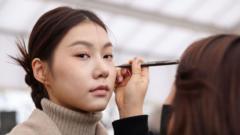The ongoing trade tensions between South Korea and the U.S. have led to uncertainty for K-beauty retailers and consumers alike. K-beauty, which encompasses an array of skincare, makeup, and cosmetic products, has seen a meteoric rise in demand, with American consumers spending approximately $1.7 billion on these items in 2024 alone—indicating over a 50% growth from the prior year.
Many enthusiasts, like Pearl Mak, a 27-year-old graphic designer, attest to the effectiveness of K-beauty products, citing their gentler ingredients as a primary factor for preference. Despite the recent tariffs imposed by President Trump, which could increase prices, consumers express willingness to pay a premium for their beloved products.
Retailers such as Santé Brand and Senti Senti are witnessing an uptick in orders, as customers strategically stock up ahead of anticipated price hikes. This sentiment is supported by economists who suggest that while larger K-beauty brands can absorb some tariff-related costs, smaller companies may struggle to maintain affordable prices.
In light of Trump's recent trade policies affecting not only South Korea but also Japan and the European Union, uncertainty looms over the K-beauty market, with consumers and retailers alike unsure how the developed trade agreements will influence their purchasing decisions moving forward. Despite potential price increases, the global allure of South Korean beauty products may continue to drive demand, leaving loyal customers hesitant to switch to domestic alternatives, which many find less effective.
Many enthusiasts, like Pearl Mak, a 27-year-old graphic designer, attest to the effectiveness of K-beauty products, citing their gentler ingredients as a primary factor for preference. Despite the recent tariffs imposed by President Trump, which could increase prices, consumers express willingness to pay a premium for their beloved products.
Retailers such as Santé Brand and Senti Senti are witnessing an uptick in orders, as customers strategically stock up ahead of anticipated price hikes. This sentiment is supported by economists who suggest that while larger K-beauty brands can absorb some tariff-related costs, smaller companies may struggle to maintain affordable prices.
In light of Trump's recent trade policies affecting not only South Korea but also Japan and the European Union, uncertainty looms over the K-beauty market, with consumers and retailers alike unsure how the developed trade agreements will influence their purchasing decisions moving forward. Despite potential price increases, the global allure of South Korean beauty products may continue to drive demand, leaving loyal customers hesitant to switch to domestic alternatives, which many find less effective.



















